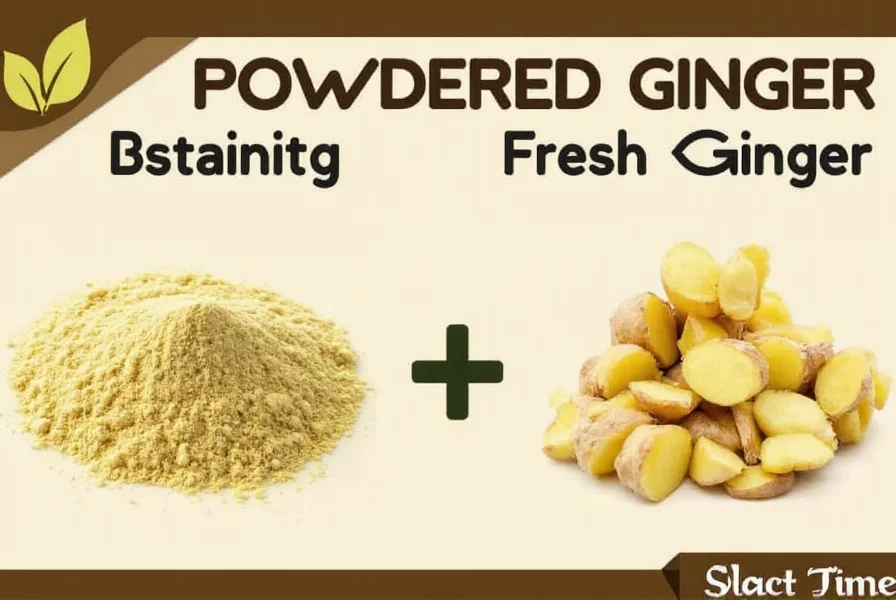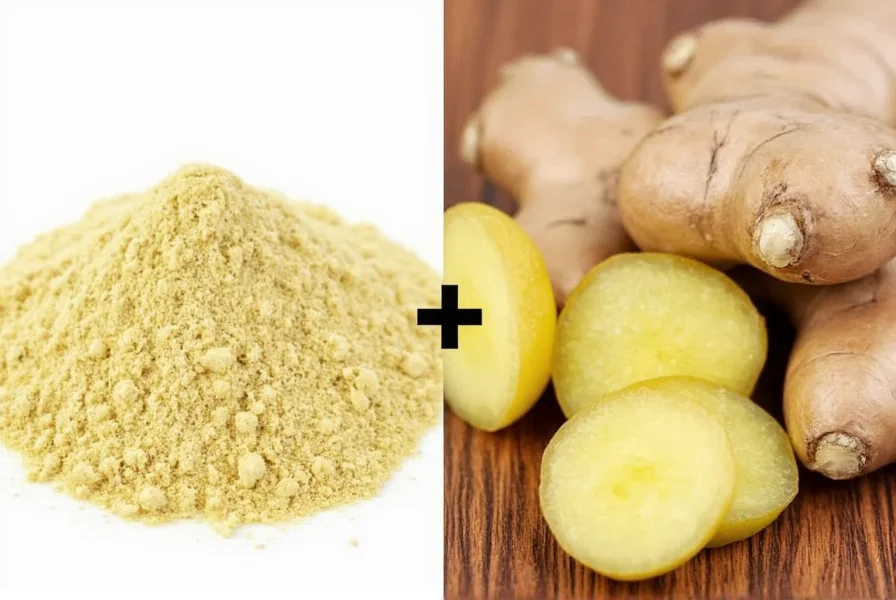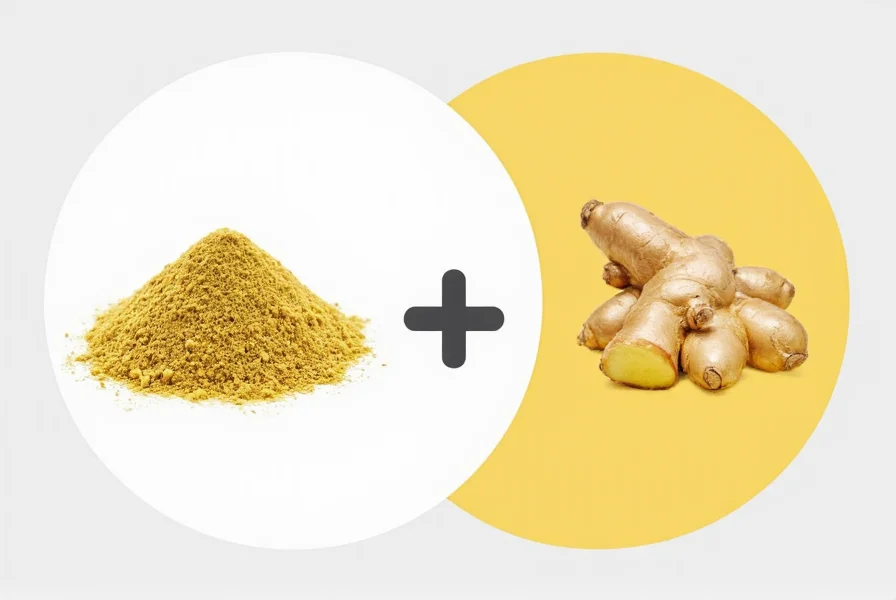Understanding how to properly substitute powdered ginger for fresh ginger is essential for achieving consistent results in your cooking and baking. While both forms originate from the same rhizome, their flavor profiles, potency, and culinary applications differ significantly due to the dehydration process that transforms fresh ginger into its powdered form.
Key Differences Between Fresh and Powdered Ginger
Fresh ginger contains approximately 80% water, giving it a bright, sharp, and slightly citrusy flavor with noticeable heat. Powdered ginger, having lost its moisture content, develops a more concentrated, earthy, and slightly sweeter profile with less pronounced heat. This transformation affects not only flavor intensity but also how each form interacts with other ingredients in recipes.
Precision Conversion Guide for Ginger Substitution
Accurate measurement is crucial when substituting between these two forms. The following table provides precise conversion ratios for various recipe requirements:
| Fresh Ginger Required | Powdered Ginger Substitute | Best For |
|---|---|---|
| 1 tablespoon (15ml) | 1/4 teaspoon | Most baking recipes |
| 1/4 cup (60ml) | 1 teaspoon | Cake batters, cookie doughs |
| 1/2 cup (120ml) | 2 teaspoons | Bread doughs, spice cakes |
| 1 cup (240ml) | 1 tablespoon | Large batch recipes |

When Powdered Ginger Works Best as a Substitute
Powdered ginger excels as a substitute in dry-ingredient applications where moisture content matters less. Baked goods like gingerbread, spice cakes, and cookies typically respond well to powdered ginger substitution. The dry nature of powdered ginger integrates seamlessly with flour and other dry ingredients, distributing flavor evenly throughout the batter.
For marinades and spice rubs, powdered ginger often provides more consistent results than fresh, as it adheres better to food surfaces. In chai blends and other spice mixes, powdered ginger's concentrated flavor delivers immediate impact without requiring extraction time.
Situations Where Substitution Requires Adjustment
Certain recipes demand careful consideration when substituting. In stir-fries and sautés where fresh ginger's aromatic oils release quickly when heated, you'll need to add powdered ginger earlier in the cooking process to allow flavors to develop. For beverages like ginger tea, increase liquid content slightly when using powdered ginger to prevent an overly concentrated flavor.
Recipes relying on fresh ginger's fibrous texture—such as candied ginger or certain Asian dishes—won't achieve the same results with powdered ginger. In these cases, consider using crystallized ginger finely chopped as an alternative substitute.
Flavor Profile Adjustments for Optimal Results
Because powdered ginger lacks the bright top notes of fresh ginger, you may need to enhance certain flavor dimensions. Add a squeeze of lemon juice to baked goods to restore some brightness. For savory dishes, a pinch of cayenne can help replicate fresh ginger's sharper heat profile.
When substituting in delicate recipes like custards or light sauces, start with 1/8 teaspoon less than the recommended amount, then taste and adjust. Powdered ginger's flavor intensifies as it sits, so allow 15-20 minutes for flavors to meld before making final adjustments.
Storage and Freshness Considerations
Powdered ginger maintains potency for 2-3 years when stored in an airtight container away from light and heat, while fresh ginger lasts only 2-3 weeks refrigerated. Test powdered ginger's potency by rubbing a small amount between your fingers—if you can't detect a strong aroma, it's time to replace it.
For best results in substitution, use high-quality, recently purchased powdered ginger. Older spice blends lose potency, requiring increased measurements that can lead to bitter flavors. Always measure powdered ginger with proper measuring spoons rather than estimating, as small differences significantly impact final flavor.
Common Substitution Mistakes to Avoid
Many home cooks make critical errors when substituting ginger forms. Using equal volumes (1:1 ratio) creates overwhelmingly strong flavors that dominate dishes. Adding powdered ginger at the same stage as fresh ginger in cooking prevents proper flavor development. Ignoring recipe moisture balance when substituting can alter texture in baked goods.
Remember that powdered ginger won't provide the same visual appeal as fresh ginger slices or julienne in dishes. For presentation-focused recipes, consider using a combination approach—powdered for flavor base with minimal fresh ginger for visual elements.

Special Considerations for Baking Applications
In baking, the moisture difference between fresh and powdered ginger significantly affects texture. When substituting in cake recipes, reduce other liquid ingredients by 1-2 teaspoons per cup of flour to compensate for the missing moisture from fresh ginger. For cookie recipes, chilling the dough longer than usual helps prevent excessive spreading caused by the drier ingredient profile.
Professional bakers often create a ginger "extract" by steeping powdered ginger in warm liquid ingredients for 10-15 minutes before incorporating into batters. This technique maximizes flavor extraction while maintaining proper moisture balance in the final product.











 浙公网安备
33010002000092号
浙公网安备
33010002000092号 浙B2-20120091-4
浙B2-20120091-4